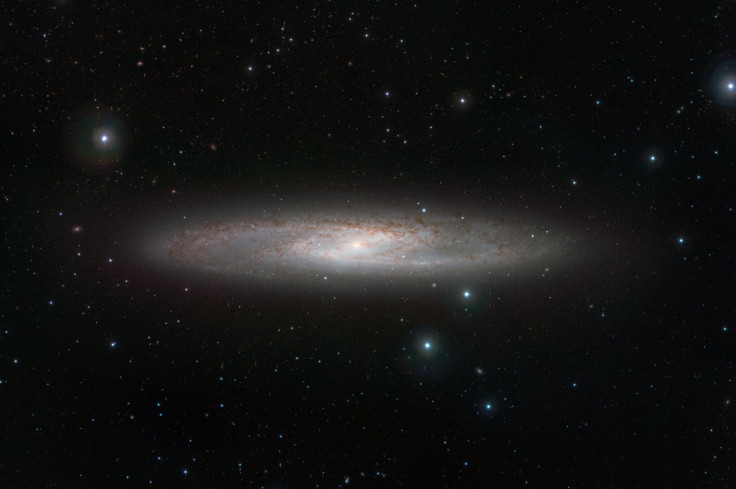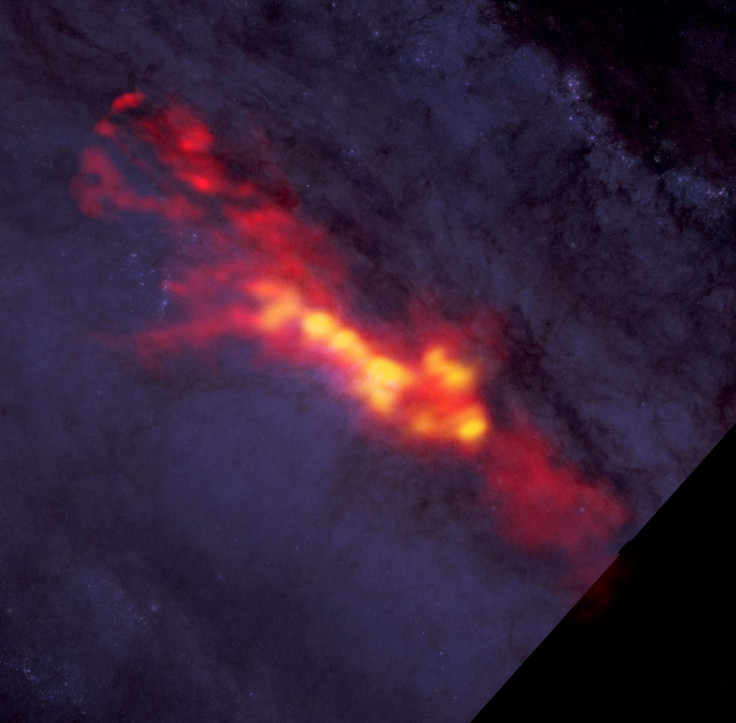Starburst Galaxy Recipe For Increased Star Formation Revealed In New Observations Of Sculptor Galaxy

Some galaxies are experiencing a tremendous rate of star formation activity. Called starburst galaxies for that reason, they can produce stars up to 1,000 times faster than other galaxies, including our Milky Way. The Sculptor Galaxy, NGC 253, is a starburst galaxy just 11.5 million light-years from Earth, making it an ideal candidate for observation. Astronomers trained the Atacama Large Millimeter/submillimeter Array telescope in Chile on the Sculptor Galaxy to determine the differences between a starburst galaxy and a normal one to better understand the increased star formation activity in that type of galaxy.
Radio telescopes like ALMA let astronomers peer into the dense clouds of dust and gas within the Sculptor Galaxy to see how stars were forming in these stellar nurseries. "To understand why, we took one of the nearest such regions and pulled it apart – layer by layer – to see what makes the gas in these places so much more efficient at star formation," astronomer Adam Leroy, formerly with the National Radio Astronomy Observatory and currently with Ohio State University, said in a statement.

Researchers were able to identify gases such as carbon monoxide, hydrogen cyanide and molecules H13CN and H13CO+ and determine their distribution in and around 10 stellar nurseries within the Sculptor Galaxy. Carbon monoxide is mostly found around stellar nurseries in less dense areas of gas, while H13CN and H13CO+ are found in areas of dense gas. The researchers determined these areas were a lot more active, massive and 10 times denser than similar gas clouds in spiral galaxies, which helps explain the accelerated star formation in starburst galaxies.
After peering into stellar nurseries, the researchers hope to use radio telescopes to determine if starburst galaxies produce a greater variety of stars than normal galaxies. ALMA's previous observations helped them determine why massive galaxies are so rare. The increased star formation activity cause gas to be ejected from the galaxy faster than it's being pulled in, the Los Angeles Times reported. The lack of gas will soon deprive the Sculptor Galaxy of the necessary material to produce new stars.
The research was published in the Astrophysical Journal.
© Copyright IBTimes 2024. All rights reserved.






















